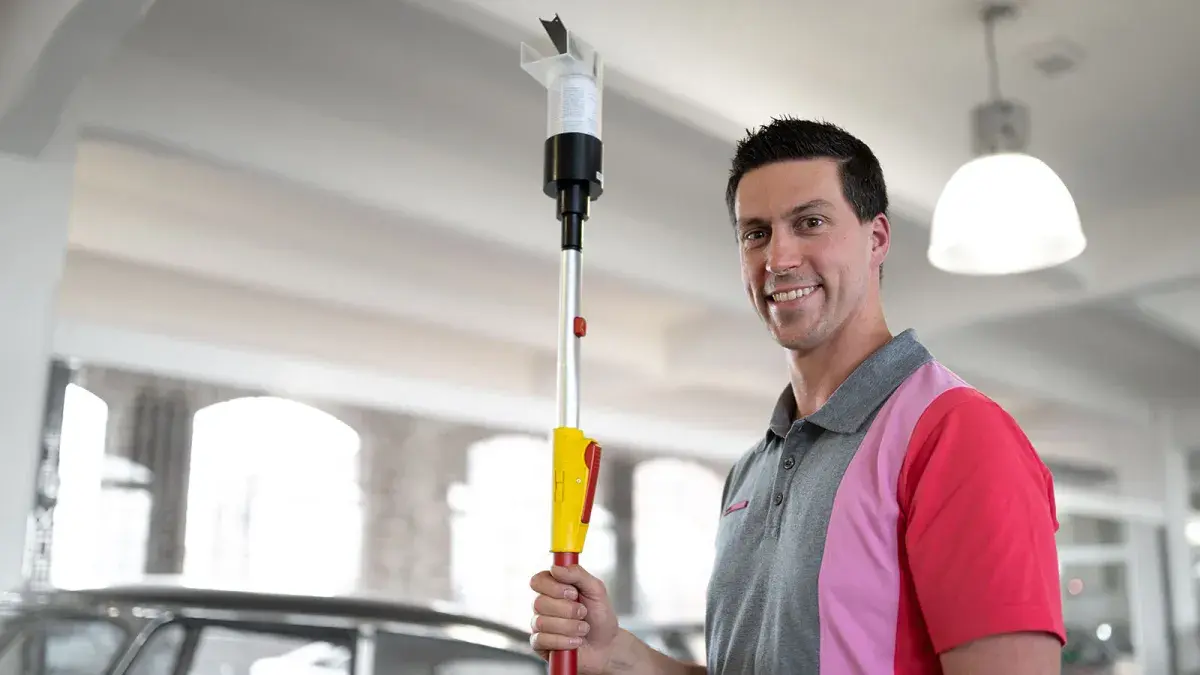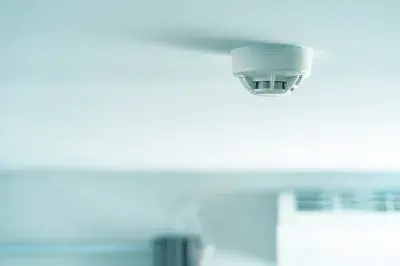Heat detectors are a supplement to classic, i.e. optical smoke detectors. They therefore do not act on the basis of the scattered light method and do not alarm on the basis of smoke development.
Function of heat detectors
Heat detectors detect a fire based on the development of heat by means of thermistors. There are two types of heat detectors:
- Maximum heat detector
- Heat differential detector
Heat maximum detectors trigger an alarm as soon as a defined temperature (usually between 50 °C and 60°) is reached for the respective area of application. In contrast, heat differential detectors sound an alarm in the event of a temperature increase per unit of time compared to the ambient temperature. For this purpose, heat differential detectors have one exposed and one sealed thermistor. If the difference is too great, an alarm is triggered.
Modern heat detectors combine both functions, so there is no longer any distinction in the current DIN standard.
Good to know: They are also called thermodifferential detectors or thermomaximal detectors.

Areas of application of the heat detectors
Areas of application are especially rooms where a smoke alarm is not suitable due to frequent smoke, dust or steam development. In this way, frequent false alarms caused by disturbance variables can be avoided.
These include production plants, logistics centres, workshops or kitchens. However, the maximum permissible room height for the heat maximum and heat differential detectors (6 m to 7.5 m) must be observed.
Important: Heat detectors are not a complete alternative for smoke detectors, but only a supplement. They are also primarily suitable for property protection, as they react more slowly than smoke detectors. Our experts will be happy to advise you on the best fire detectors for your building.
Smoke detector or heat detector
Heat detectors are useful as a supplement to smoke detectors. There are also multi-criteria detectors that combine various sensor properties. These include, among others, a thermo-optical smoke detector that has a heat- and optically-based detection method.


Let the experts advise you!
The right choice or combination of heat and smoke detectors increases the protection for your building. Our experienced experts will be happy to advise you - throughout Germany. Contact us now.
Frequently asked questions & answers
What is the difference between smoke detectors and heat detectors?
Smoke detectors detect the development of smoke, which is detected optically by means of scattered light. Heat detectors detect the exceeding of a maximum temperature or a temperature rise. A thermo optical smoke detector combines both properties for more safety.
What is a linear heat detector?
Linear heat detectors work with a sensor cable or a gas-filled pipe system. The sensors can be several hundred metres long. Therefore, these systems are particularly suitable for monitoring large areas, such as underground garages.
What are heat detectors suitable for?
They are suitable for companies with increased smoke, dust or steam development, e.g. production plants, workshops or kitchens.
What is a multi-criteria detector?
A multi-criteria detector combines the features of a heat and smoke detector.
What are the specifications?
The classification is regulated in DIN EN 54-12. Furthermore, point-type and line-type heat detectors are not subject to replacement periods according to DIN 14675.
Is there a classification of heat detectors?
Yes, there are 8 different classes based on typical and maximum application temperature and minimum and maximum static response temperature.
